Hutongs in Beijing

Beez Neez now Chy Whella
Big Bear and Pepe Millard
Sun 13 May 2018 22:47
|
Hutongs and a Traditional Quadrant House in
Beijing
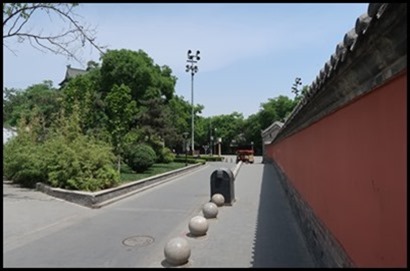 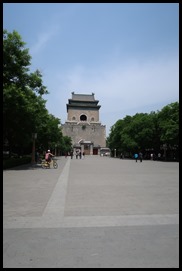 Zhonglouwan: This hutong, 757
metres long, stretches from north to south. It starts at Doufuchi Hutong in the north, with two outlets in the south
leading to Gulou (the Bell Tower) West Street and
Gulou East Street respectively. In 1947, Zhonglouwan Hutong was called Zhonglouwan. It was located in the neighbourhood of Zhonglou (the
Bell Tower), hence the name. It has been called Zhonglouwan Hutong since 1949. Now the hutong there stand the
Drum Tower and the Bell Tower, which are key National Cultural Relic Protection
Sites. The hutong is mostly residential at present. We so love the
information boards in China.
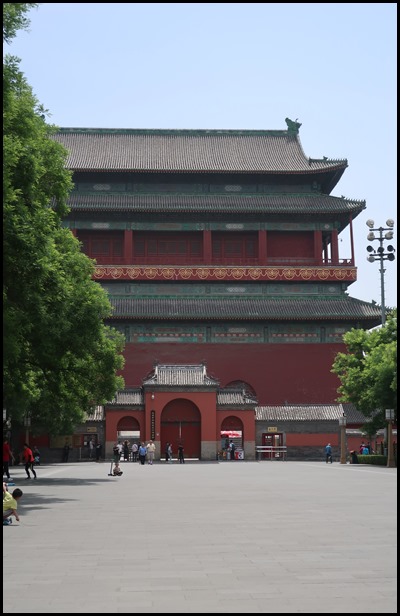 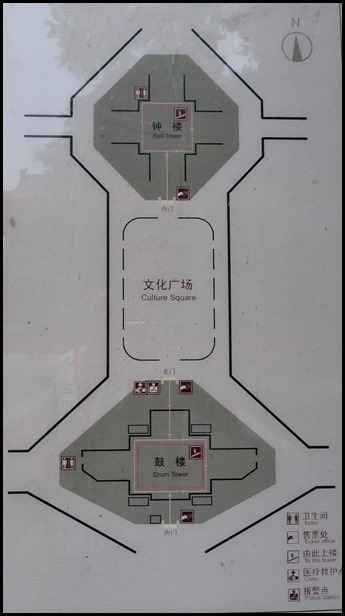 The Drum Tower had a lovely, large square in
front, at the other end is the Bell Tower.
Construction of Beijing’s Drum Tower began during the 9th year of
Emperor Zhiyuan of the Yuan Dynasty (1272 AD). The tower was originally called
“Qizheng Tower”, which means “coming from” the seven ancient celestial bodies of
gold, wood, water, fire, the earth, sun and moon.
However, shortly after construction was completed, it was destroyed by fire.
Then, in the first year of Dade, under the reign of Emperor Chengzong (1297 AD)
of the Yuan Dynasty, the tower was rebuilt. The tower as it exists today is
located at the north end of the south-north central axis of the old capital
Beijing, it was the result of a rebuilding effort in the 18th year of Yongle
during the Ming Dynasty (1420 AD).
The Drum Tower is
46.7 metres in height, with triple eaves and a hip and gable roof. It has a
primarily wooden structure covered with round grey tiles and green glazed trim
at the top. There used to be 25 watchmen’s drums (1
main drum representing one whole year and 24 mass drums representing
twenty-four Solar Terms) on the second floor of
the Drum Tower, there is only one remaining now.
The Bell and Drum
Towers together made up the time-announcing center of the capital during the
Yuan, Ming and Qing Dynasties. In the 13th year of the Republic of China (1924),
the time-announcing function was finally put to rest. In 1957, the Beijing
People’s Committee announced that the Drum Tower would become a protected site
at municipal level, and in 1996, the Drum Tower was brought under national
protection by the State Council of the People’s Republic of
China.
 Construction of Beijing Bell Tower began during the 9th year of Emperor Zhiyuan of
the Yuan Dynasty (1272 AD), and was destroyed by fire shortly thereafter. It was
rebuilt at the north end of the north-south central axis of the ancient capital
Beijing in the 18th year of Yongle during the Ming Dynasty (1420), then
destroyed by fire again. (I’m feeling a pattern coming on here). The
construction of the existing building began in the 10th year of the Qing Dynasty
(1745 AD) under the reign of Qianlong, and was completed two years later. The Bell Tower is 47.9 metres high, with
double eaves and a hip and gable roof, it is an ancient building made of brick
and stone masonry, covered with black glazed tiles and green glazed trim at the
top.
As the time-announcing center of
the capital during the Yuan, Ming and Qing Dynasties, the Bell and Drum Towers
have had a history over 700 years. In 1957, the Beijing People’s Committee announced
that the Bell Tower would become a protected site at municipal level, and in
1996, the Bell Tower was brought under national protection by the State Council
of the People’s Republic of China.
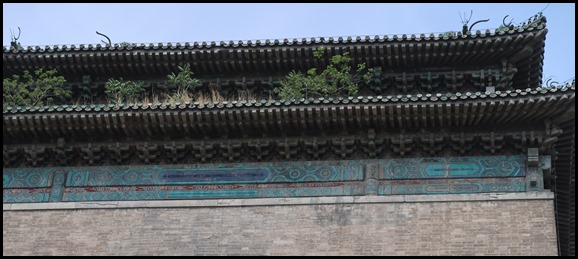 If they don’t want it to become a
‘one careful owner’ someone ought to be dispatched with a long ladder to deal
with the ‘garden’ going on near the
top.................
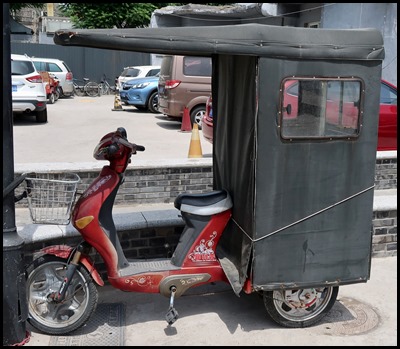  We headed down a side alley as the
thing to do here is to take a bikeshaw..... Loved these two
vehicles. Well colour me happy, the very next thing
we saw was............... A BUG.
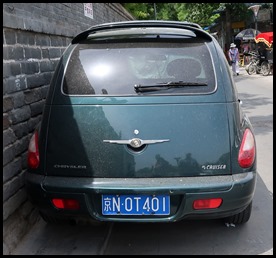 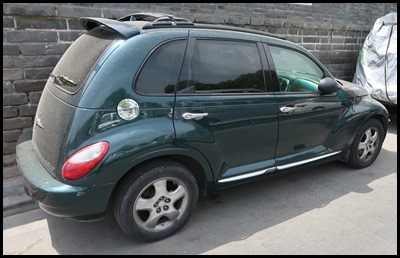 Who would have thought we would see a
PT Cruiser in China. What a delightful
WOW.
 At the corner of the next square we
could see we were in the middle of a big area surrounded by one storey buildings
from fairly modern to ancient and there was the line of
bikeshaws as we called them.
 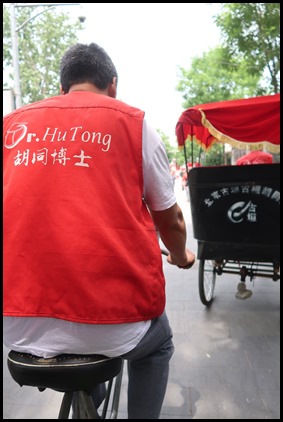 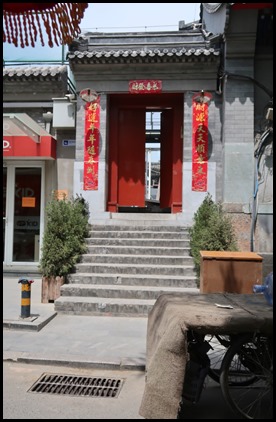 Happy in our
bikeshaw, peddling along, off we went around the hutong.
  Quite the thing to do. as we
passed loads of bikeshaws. Funny, just to pedal
around skinny backstreets.
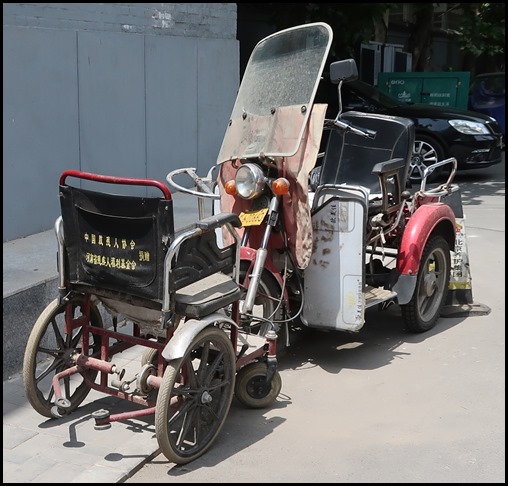 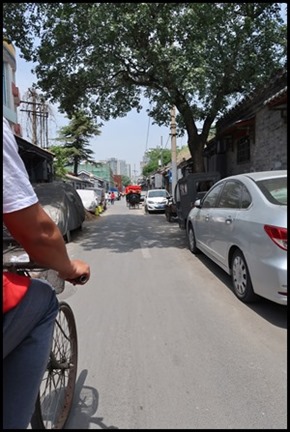  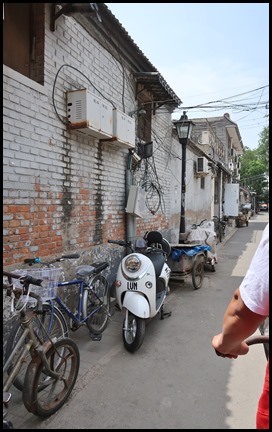 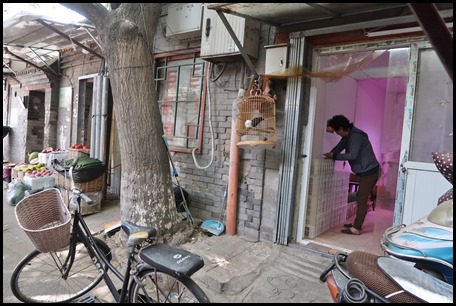  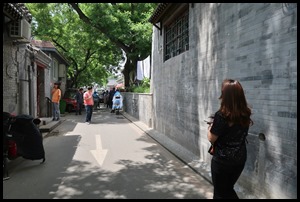 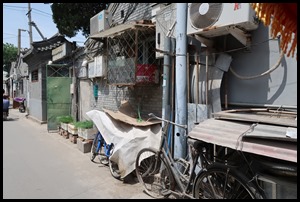 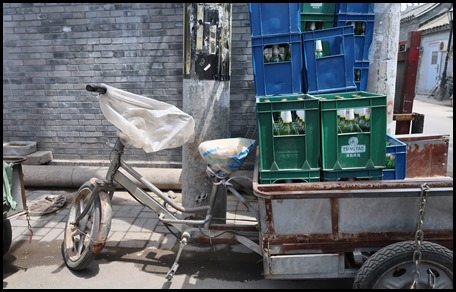 Not the most scenic thing we have ever
done, but it gave a glimpse of ‘almost village life’ away from the high-rise
blocks of flats.
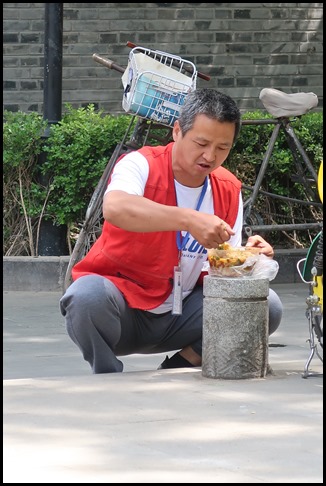  No sooner than we had come to a stop
than our chap was at his lunch.
 Back to where we started, we stood and watched the old ‘uns at
the days games. Here the elderly get up early
and enjoy a hearty noodle or rice breakfast, settle to reading until a hearty
lunch then they nip off to their nearest square to play mahjong, cards or
chatter, followed by a session of keep fit, yoga or similar. Very little supper
and an early night. Doesn’t sound too bad.......
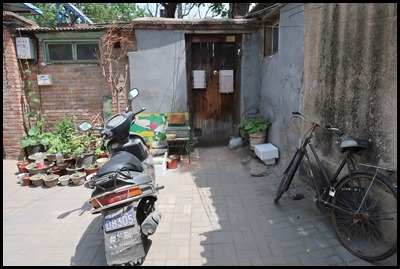 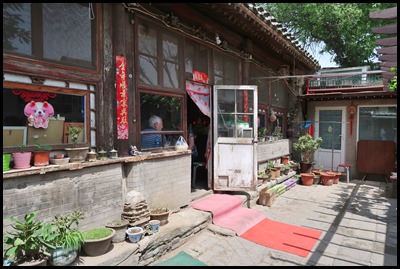 We bimbled down a non-descript alley in search of a famous tourist attraction
– a quadrant house and there we were. To out left the living
room and bedroom, to our right the kitchen. The house has been in the
same family for many generations. The current owner, a long-haired man in very
dodgy shoes, works as an accountant.
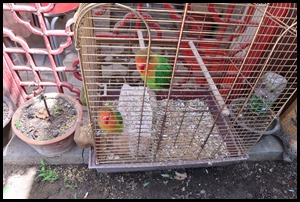  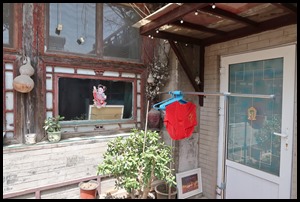 I didn’t mind the pair of lovebirds,
but, they had no treats, nothing to gnaw on and no greenery, however, I really
didn’t like seeing two small cages each containing a mynah
bird. In the corner a pair of tidy whities in
red, well it is
China..............
 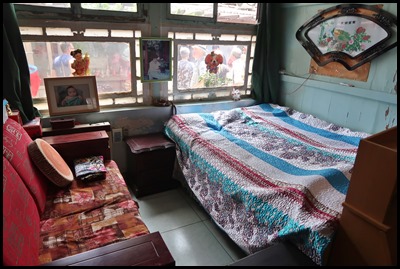 In past the house
shrine and to the right, the
bedroom.
 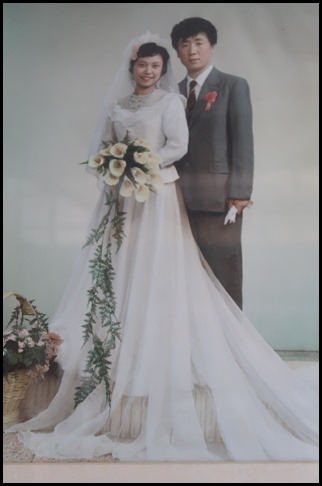 Trinkets,
DVD’s and a lovely wedding portrait.
 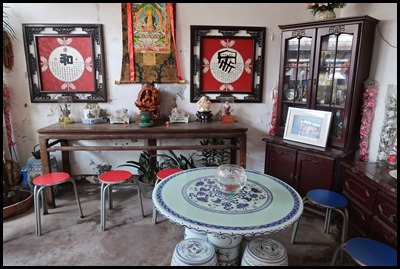 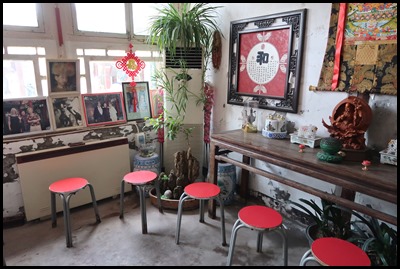 Display
dressers crammed with memories and seats for tour
groups to rest a while.
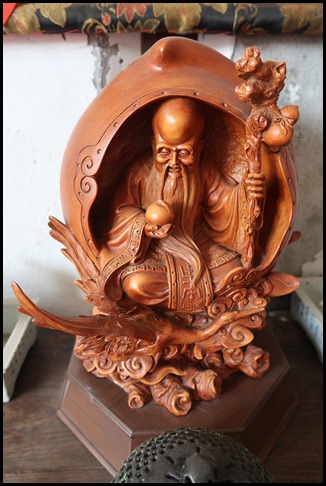  Had to stop and admire these wooden carved chaps. Then we bade our thanks and headed to
the shops.
ALL IN ALL SMALL, BUSY WITH
NICE OPEN AREAS
UNUSUAL TO SEE OLD, LOW-RISE CHINESE
BUILDINGS |